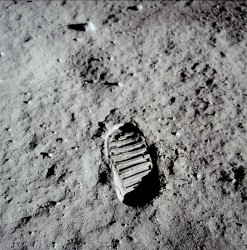Stuff from Earth’s interior, combined with simulations, have one research team pinning down the Moon’s age to only 95 million years after the Solar System formed (which would make our closest satellite about 4.4 billion years old.)
The simulation involved replicating how the Earth and the other terrestrial planets (Mercury, Venus and Mars) grew from a protoplanetary disc surrounding the young Sun. After 259 simulations, the researchers uncovered a link between when a Mars-sized object smacked Earth (eventually forming the Moon) and how much material Earth gained after the crash.
“This correlation just jumped out of the simulations and held in each set of old simulations we looked at,” stated Seth Jacobson of the Observatory of Cote d’Azur in France, who led the study.

Researchers are calling this a “geologic clock” that dates the Moon independently from the samples Apollo astronauts collected from the moon in the 1960s and 1970s, which were dated using radioactive decay of atomic nuclei. The Earth’s mass was estimated using previously published material examining how plentiful “siderophile” (iron-associated) elements were in Earth’s mantle.
The exact date, for the curious, puts the Moon’s formation at 95 ±32 million years after the solar system began. The measurement agrees with some, but not all, radioactive dating methods.
The researchers argue that this new understanding will help scientists figure out which of the radioactive dating methods are the most useful to figure out the Moon’s age, but it will be interesting to see what other teams think of that conclusion.
You can read the full study in Nature.
Source: Southwest Research Institute

